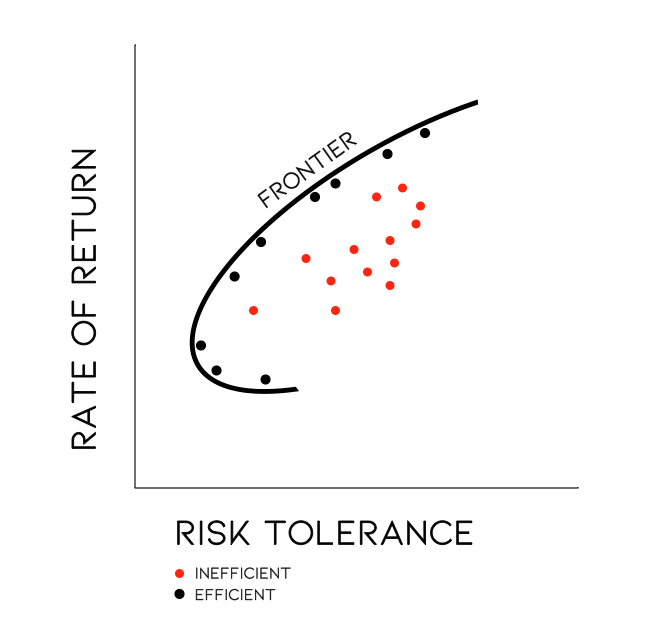Find Your Territory
Posted onAt the end of Mark Twain’s, The Adventures of Huckleberry Finn, the main character tells the reader that he is going to “light out for the territories.” That is, he is going to head out to the great frontier. In this new chapter of history, investors should consider how they will reach the frontier…the efficient frontier.
The efficient frontier is a concept that is part of modern portfolio theory, or MPT. The idea behind modern portfolio theory is that investors must seek the maximum return given the risk profile of their portfolio. The efficient frontier is a tool MPT practitioners use to assess if they are getting the largest possible return based on the level of risk they are taking on. Or, to put it another way, the efficient frontier is a way to ensure you are not taking any additional, unnecessary risk for the investment return you are receiving.
The “frontier” is a curved line that sits on an X, Y axis. The line represents the greatest possible return an investor can earn based of the level of risk represented in their portfolio. It is not possible to construct a portfolio that crosses this boundary. An optimal portfolio resides on the curve because it offers the most return for risk absorbed. If a portfolio sits anywhere below the curve it is “inefficient” because it represents a rate of return that could be increased without adding to the current level of risk. For example, an investor might be receiving a 7% annualized rate of return on a portfolio that exposes the holder to more risk than is necessary to achieve that same return.
This established concept in portfolio management has new resonance today as investors seek to ensure that there is no unnecessary risk in their portfolio given the return they are receiving. For many, rebalancing is necessary for returning to the frontier.
Research shows that gold plays an important part of that rebalance. Consider, the performance of gold in comparison to the S&P 500 during several, historic financial downturns. During the Great Recession, gold returned nearly 50% while the S&P 500 fell by almost the same percentage. In the previous 2002 recession gold gained while the S&P 500 fell. This inverse relationship has appeared many times including Black Monday, the Long-term Capital Management Crisis, and the September 11th terrorist attacks.
The present represents a critical juncture for investors. Over the last decade, many investors have enjoyed equities growth lasting for a historically long period. Over those years, many felt encouraged to overweigh their exposure to equities in what seemed like a “can’t lose” environment propelled, in part, by accommodative monetary policy.
Now, many are awakening to the fact that their portfolio has become a more aggressive play than they intended. As a result, they reside well beneath the frontier. With gold, they can rebalance the risk profile of their portfolio without severely impacting the return they have factored into their long-term plan.
Want to read more? Subscribe to the Blanchard Newsletter and get our tales from the vault, our favorite stories from around the world and the latest tangible assets news delivered to your inbox weekly.







